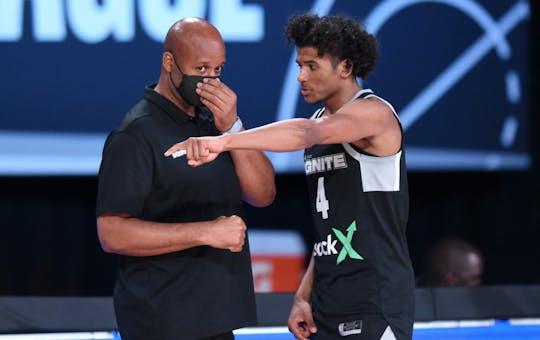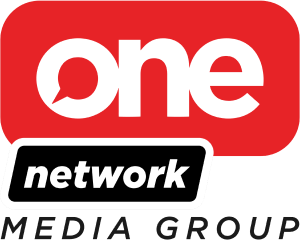The NBA G League season is freshly complete and ready for hiatus after spending its entire 2021 existence in the same protected Orlando bubble as the NBA did last summer. This wasn’t a typical G League season and this particular run, aside from the surroundings, offered a twist: It featured the debut of the G League Ignite, a team that served as an incubator for NBA prospects who didn’t want to go the college route.
By all accounts, this was a hopeful and mostly successful opening 16-game experiment. As the G League president, Shareef Abdul-Rahim oversaw the operation and Rod Strickland served as program manager for a teenaged-fueled team that was half comprised of Draft-eligible players being schooled on NBA culture. This was nurtured by Brian Shaw, the former NBA player and assistant coach for the Lakers and Pacers who served as the Ignite’s coach.
Shaw was handed the responsibility of introducing professional basketball to phenoms, showcase their skills under the close watch of league executives, and essentially preparing them for the Draft. The program gives players who normally would be one-and-done in college a chance to get paid — “legally,” said Shaw — and do so without going overseas (much like Charlotte Hornets rookie LaMelo Ball did a year ago in Australia).
“When you put apples to apples, this option is hard to beat,” Shaw said.
It’s a big investment for the league and the goal is to entice future high school seniors who might see the G League as their best option. This is somewhat similar to the setup in European basketball, where some players — such as Luka Doncic — turn professional at an early age.
The centerpiece of Ignite was 6-foot-6 guard Jalen Green, the MVP for Team USA during the U17 World Cup in 2018. He didn’t disappoint, averaging 17.9 ppg for the Ignite with 46.1% shooting overall and 36.5% on 3-pointers. There were times, though, when Jonathan Kuminga showed more ability. The 6-foot-8 forward struggled from deep (24.6%) but sparkled almost everywhere else on the floor. Isaiah Todd and Daishen Nix also had moments of promise and, just like the others, were raw and underdeveloped in other areas.
Green finished strongly with perhaps his best performance of the season: a 30-point, seven-assist, five-rebound effort in the Ignite’s playoff loss to Raptors 905.
Here’s a Q-and-A with Shaw about the league, the players involved and how big a role Kobe Bryant played in motivating the next generation of professionals.
Editor’s Note: The following conversation has been condensed and edited.
NBA.com: The season is over for Team Ignite, and in retrospect, what was the experience like for everyone involved, especially the teenagers?
Shaw: It was smoother than expected just because of their willingness to be coached, and to have a beginner’s mind, which isn’t always easy to ask of and to expect from young elite players like we had. Also, we’re in a pandemic and a bubble and they’re 18-19 years old, away from home, with all the rules and protocol. It was really tough on them at that age. It was tough on me at 54. I don’t know what it would’ve been like for me at their age, to have to go through that and perform on a nightly basis for my future. I commend them for the job they did and how they were able to pivot and adapt to the circumstances, which were a challenge.
There’s such a generational gap between the young core of Team Ignite and the rest of the league, even the coaching staff. Or is that an overstatement?
Before the tournament one of our guys put together a film of the team officials like Shareef (Abdur-Rahim) and Rod when they played in the NBA. They also put in footage of me playing. When Jalen Green saw me make a pass to Larry Bird, he immediately turned around and his eyes were wide open and said, `You played with Larry Bird?’ It was a pure and innocent question, but it wasn’t until that moment that it resonated with him and the other guys how long I’d been around. They just don’t know, and you can’t blame them, because when we all played they weren’t even born yet.
What were typical questions they had about the NBA?
They ranged from just curiosity about regular basketball situations, what do I do in this situation, how much film to watch, who had the best footwork out of the guys you worked with, what was this player’s work ethic like, how important is it to lift weights. They were really all over the place.
Obviously they had plenty of Kobe questions, correct?
Absolutely, because they knew I played with and coached Kobe and also because that was their guy. I told them about his work ethic, his killer instinct, his footwork, which was all superior. I told them that there was no accident he was as good as he was because he put in the work. He also had the dedication and discipline not only about the game itself, but also the little things like icing his body and warming his muscles down after a workout. And the other thing Kobe did was do everything at game speed in practice, so when you get into the game it’s not foreign. Do that, rather than go through the motions when you’re warming up before the game. It makes all the difference, especially in the long run.
There are only a handful of former great players who can still connect to the next generation — guys like Michael Jordan of course, and Allen Iverson and of course Kobe. In the case of Kobe, did he register the most of all the past greats with the teenagers?
He did, and so when I wanted to get their attention, I mentioned his name quite a bit. I told them I played with him, against him and coached him. So when I said ‘Kobe,’ it got their attention right away all the time, because I was in those battles right along Kobe.
With the AAU culture and the way kids are glamorized at such an early age — their highlights are on YouTube when they’re just 14 in some cases — putting a structure around them when they’re on the cusp of getting drafted must be, let’s just say, an adventure, right?
It’s just the way things are. When we started training camp before coming to Orlando, I had some rules and they were non negotiable: No parents, no agents, no workout guys, no hanger-oners in our facility to watch practices. They can’t live with you in your apartments, either. I did that with the purpose in mind to create some independence with them, and to block out all the outside noise that comes along with that. And I made sure the parents knew that I’m a parent also. But just as I would never tell them how to raise their child, you don’t tell me how to coach your child. You’re turning them over to us, so trust in me I know what I’m doing and I can help them get to where they want to go. I think they can see the benefit of that now.
What were your impressions of Green?
Oh, he’s a future star, has effortless athleticism, is as competitive as they come. The young man has a high skill level.
And Jonathan Kuminga?
He was the most NBA-ready in terms of strength and physicality. He’ll be the best two-way player in this upcoming Draft. He can make 3s, drive to the basket, finish through contact, has midrange and can defend one through four. Just a special talent.
Isaiah Todd?
You know, I don’t understand why he hasn’t been on everybody’s radar. At 6-10 he has good size and I had him in drills with the guards. He can shoot as well as any of them from 3. He has an off-the-dribble game, a skill set that allows him to play on the perimeter and in the post. He was the energy of the team. You don’t have to pump him up to get him going and he was probably the favorite teammate of everyone. I saw some of the mock Drafts and they didn’t have him first or second round which makes me scratch my head. He’s a first-round player. He opened a lot of eyes to his talent.
Because of this test run, high school players will take notice of what happened this season with the Ignite and begin to weigh their options, which was the goal anyway. Other than a chance to play in the NCAA Tournament, does college ball offer a better advantage for 5-star players with realistic NBA aspirations?
The college players started before we did this season. They were on TV first. Our guys were waiting our turn, but once the season started we were getting coverage. We also had the NBA machine behind us, fueling this whole program. Those kids can go to college if they want, but this is better preparation because of the competition we offer. I guarantee that all these teams in the G League would beat any and every college team out there, so the level of competition was high.
And other advantages for Team Ignite?
Our guys are getting a head start at the big boy line, the 3-point line. College has a shorter line. There’s also the NBA rules, the sets, the terminology, the speed. What we offer is the same thing happening in the NBA. The college guys have to learn this later on down the line.
How has this benefitted you personally? You had a successful run as an assistant coach, did some TV work, and was once a head coach with the Nuggets. Do you see yourself sticking with this, or using it as a springboard back to the NBA?
I was doing NBA TV and some Warriors games on TV before I got the call to do this. This is the perfect opportunity. It has helped me in areas that were weak for me in my first go round with Denver, in terms of dealing with this generation of players and relating to them better and knowing all the things they go through. I can see myself riding this out and see wherever it takes me. I’ll take it as it comes. I believe in it, the vision of it. I see a personal obligation to see this through. You don’t always get these opportunities.
* * *
Shaun Powell has covered the NBA for more than 25 years. You can e-mail him here, find his archive here and follow him on Twitter.
The views on this page do not necessarily reflect the views of the NBA, its clubs or Turner Broadcasting.




